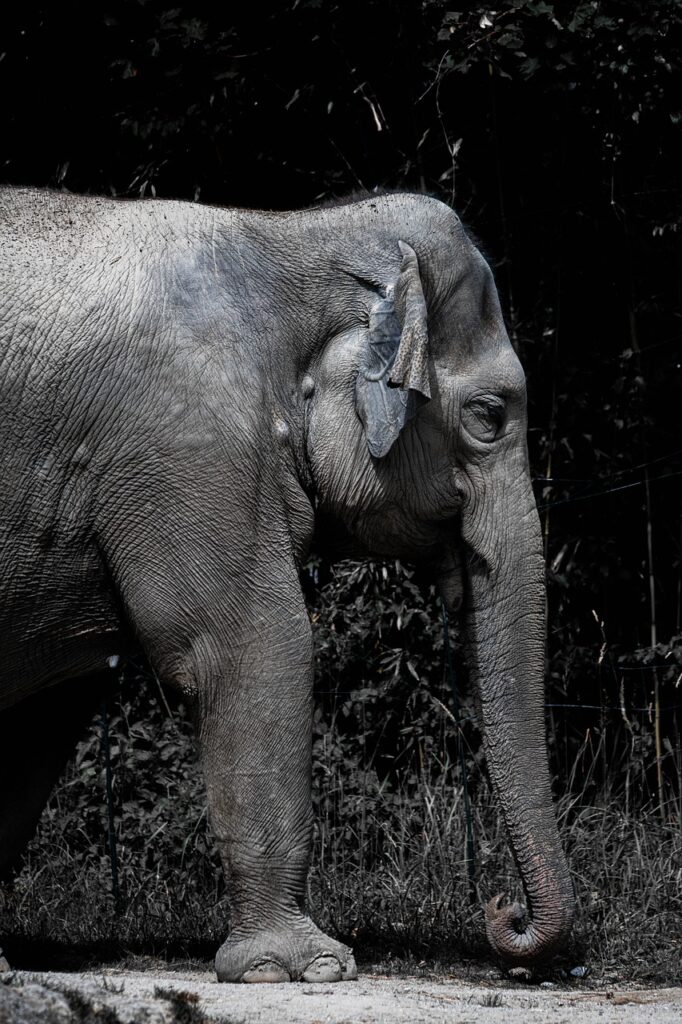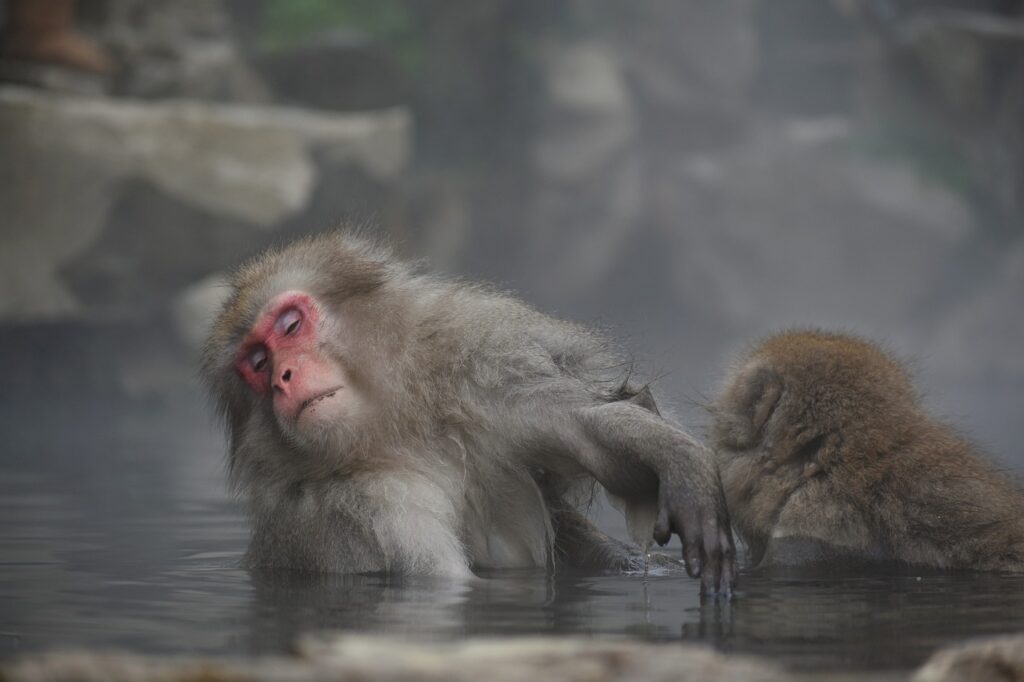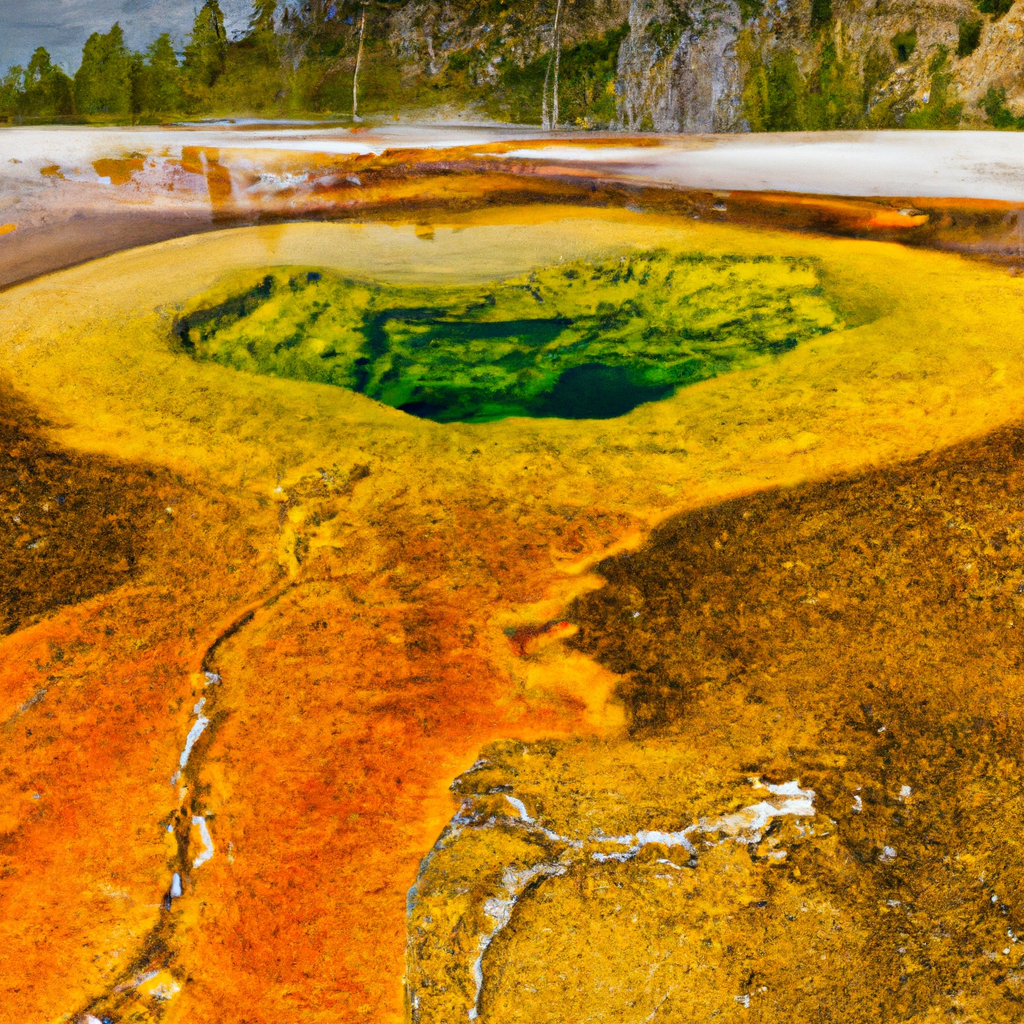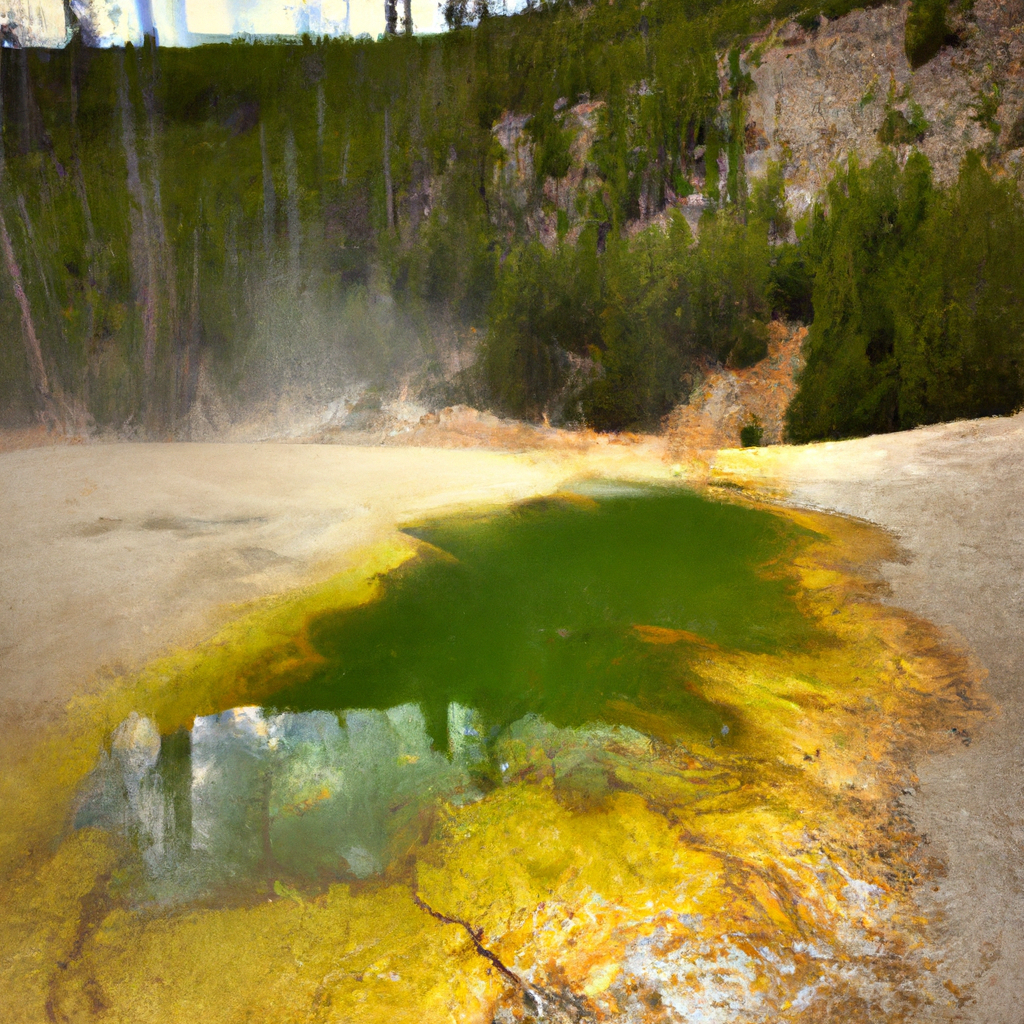Picture this: you̵7;re standing in the heart of Montana, surrounded by breathtaking landscapes and a sense of tranquility that only nature can provide. As you dip your toe into one of the state’s famous hot springs, a peculiar scent fills the air – the unmistakable smell of sulfur. But what is it about these natural wonders that gives off this distinct odor? In this article, we will unravel the mystery behind the smell of sulfur in Montana’s hot springs, exploring the fascinating science behind it and understanding how it adds to the overall allure of these healing marvels of nature. Get ready to dive into the captivating world of geothermal wonders, where the earth’s powerful forces meet the invigorating scents of sulfur.

Overview
Introduction to Montana’s hot springs
Montana, the epitome of natural beauty in the United States, is home to numerous hot springs that have captivated visitors for centuries. These geothermal wonders offer not only a serene escape amidst breathtaking landscapes but also the opportunity to experience the healing power of nature. Among the unique characteristics of these hot springs, the smell of sulfur stands out as an intriguing element that adds to their mystique.
The healing power of nature in hot springs
Hot springs have long been recognized for their therapeutic properties, and Montana’s hot springs are no exception. Immersing yourself in the mineral-rich waters can invigorate your body and soul, soothing your muscles, improving circulation, and alleviating stress. These natural wonders offer a chance to embrace the restorative forces of nature, promoting wellness and relaxation.
Chemical Composition
Presence of sulfur compounds
The distinct sulfur scent often associated with Montana’s hot springs finds its origins in the presence of sulfur compounds in the water. These compounds, including hydrogen sulfide (H2S), give rise to the characteristic smell reminiscent of rotten eggs. While the odor may be off-putting to some, it is a testament to the geothermal activity and natural processes occurring beneath the surface.
Interactions between sulfur and other elements
Sulfur in hot springs interacts with various elements, creating a complex chemical environment. It combines with oxygen to form sulfate compounds, contributes to the water’s acidity, and reacts with metals to create sulfide minerals. These interactions not only lend character to the hot springs but also influence their overall chemistry, providing a diverse range of therapeutic benefits.
Hydrogen Sulfide Gas
The main contributor to sulfur smell
Hydrogen sulfide gas (H2S) is the primary culprit behind the characteristic sulfur smell permeating Montana’s hot springs. This gas is released as a byproduct of bacterial activity deep within the geological structures. As the water reaches the surface, the hydrogen sulfide gas volatilizes into the air, creating the distinctive scent that lingers around the hot springs.
Effects of hydrogen sulfide on human health
In large concentrations, hydrogen sulfide gas can be harmful to human health. Prolonged exposure to high levels of H2S may cause headaches, dizziness, and respiratory issues. However, the concentrations found in Montana’s hot springs are generally low and pose no significant threats to visitors. In fact, studies suggest that exposure to small amounts of hydrogen sulfide can have positive effects on the cardiovascular and respiratory systems, further contributing to the healing potential of these hot springs.
Volcanic Activity
Connection between sulfur and volcanic activity
The source of sulfur in Montana’s hot springs can be traced back to the region’s volcanic history. Volcanic activity plays a significant role in the formation and maintenance of geothermal systems, including hot springs. As magma rises through the Earth’s crust, it heats surrounding rocks and groundwater, creating the perfect conditions for sulfur-rich minerals to dissolve and be carried to the surface.
Evidence of volcanic eruptions in Montana
Montana bears evidence of past volcanic eruptions, with remnants of ancient lava flows and volcanic ash scattered across the landscape. This volcanic activity not only left behind dramatic geological formations but also provided the foundation for hot springs to thrive. The interplay between volcanic activity and the sulfur present in Montana’s hot springs underscores their geological significance.

Geological Formation
Formation of hot springs in Montana
The intricate geological processes that form hot springs in Montana are a testament to the Earth’s dynamic nature. Deep below the surface, geothermal heat sources, such as magma chambers and geysers, warm the groundwater. As this heated water rises through fractures and faults in the Earth’s crust, it eventually emerges as the rejuvenating hot springs we admire today.
Specific geological processes that contribute to sulfur smell
The presence of sulfur in the hot springs is due to specific geological processes. As the heated water makes its way through the subsurface rocks, it interacts with minerals rich in sulfur, dissolving them and carrying the sulfur compounds to the surface. This process, coupled with the bacterial activity, releases the characteristic sulfur scent that defines Montana’s hot springs.
Microorganisms
Role of bacteria in sulfur emission
Microorganisms, particularly bacteria, play a vital role in the emission of sulfur compounds from Montana’s hot springs. These bacteria thrive in the geothermal environment, using sulfur as an energy source through a process known as sulfur metabolism. As they break down sulfur compounds, they release hydrogen sulfide gas, intensifying the sulfur smell associated with the hot springs.
Types of sulfur-metabolizing bacteria found in hot springs
Several types of sulfur-metabolizing bacteria have been identified in Montana’s hot springs, contributing to the diverse microbial ecosystems that exist within these geothermal habitats. Thermophiles, such as Sulfolobus and Thermus, are commonly found due to their ability to thrive in high-temperature environments. These bacteria are not only key players in sulfur cycling but also contribute to the unique biodiversity that characterizes Montana’s hot springs.

Temperature and Pressure
Effects of temperature and pressure on sulfur emission
Temperature and pressure exert significant influence on sulfur emission in Montana’s hot springs. Higher temperatures accelerate chemical reactions, including those involving sulfur compounds, leading to increased sulfur emissions. Similarly, higher pressures underground can enhance the solubility of sulfur minerals, increasing their mobility and eventual eruption in the hot springs.
Relationship between sulfur smell and water temperature
Interestingly, the intensity of the sulfur smell varies with water temperature. Higher temperatures tend to generate a more pronounced sulfur odor, while cooler temperatures may yield a milder scent. This relationship between water temperature and the strength of the odor adds yet another layer of complexity to the captivating aromas surrounding Montana’s hot springs.
Environmental Impact
Impact of sulfur smell on local flora and fauna
While the sulfur smell may be an iconic feature of Montana’s hot springs, it can have ecological implications for the surrounding flora and fauna. In some cases, high sulfur concentrations can inhibit the growth of plants or interfere with the natural balance of aquatic ecosystems. However, nature has a remarkable ability to adapt, and many species have evolved mechanisms to thrive in these unique environments.
Mitigation strategies for reducing environmental impact
Efforts are underway to mitigate the potential environmental impact of sulfur emissions from hot springs. Monitoring sulfur levels in water and air quality helps identify areas where interventions may be necessary. Managing visitor access, implementing controlled development, and preserving buffer zones around hot springs all contribute to maintaining a delicate balance between human enjoyment and environmental conservation.

Tourism and Recreation
Attraction of hot springs to tourists
Montana’s hot springs are beloved attractions for tourists seeking tranquility and relaxation amid stunning natural surroundings. The enchanting combination of the healing powers of geothermal waters and the awe-inspiring landscapes draws visitors from far and wide. The sulfur smell, distinct yet intriguing, is an integral part of the hot springs experience, imbuing these destinations with a sense of authenticity and natural charm.
Activities and amenities available in Montana’s hot springs
Beyond the calming embrace of the hot springs themselves, Montana offers a plethora of activities and amenities to enhance the visitor experience. Popular pastimes include hiking through scenic trails, indulging in spa treatments, camping, and even partaking in rejuvenating yoga sessions in the midst of nature’s marvels. These diverse offerings ensure there is something for everyone to enjoy amidst the captivating allure of Montana’s hot springs.
Conclusion
Appreciating the unique smell of Montana’s hot springs
Montana’s hot springs offer a sensory experience that extends well beyond their visual and therapeutic qualities. The characteristic sulfur smell, a result of complex geological processes and microbial interactions, adds an extra layer of fascination to these already mesmerizing natural wonders. Rather than viewing it as an unpleasant odor, we should embrace it as an idiosyncratic reminder of the forces at work beneath the Earth’s surface.
Ongoing research and future discoveries
While much has been unveiled about the intriguing smell of sulfur in Montana’s hot springs, there is still ample room for further exploration and scientific inquiry. Ongoing research will continue to shed light on the microbial communities, chemical processes, and geological mechanisms, deepening our understanding of these captivating phenomena. As we uncover more about Montana’s hot springs, countless future discoveries await, further enriching our appreciation for the marvels of our natural world.

